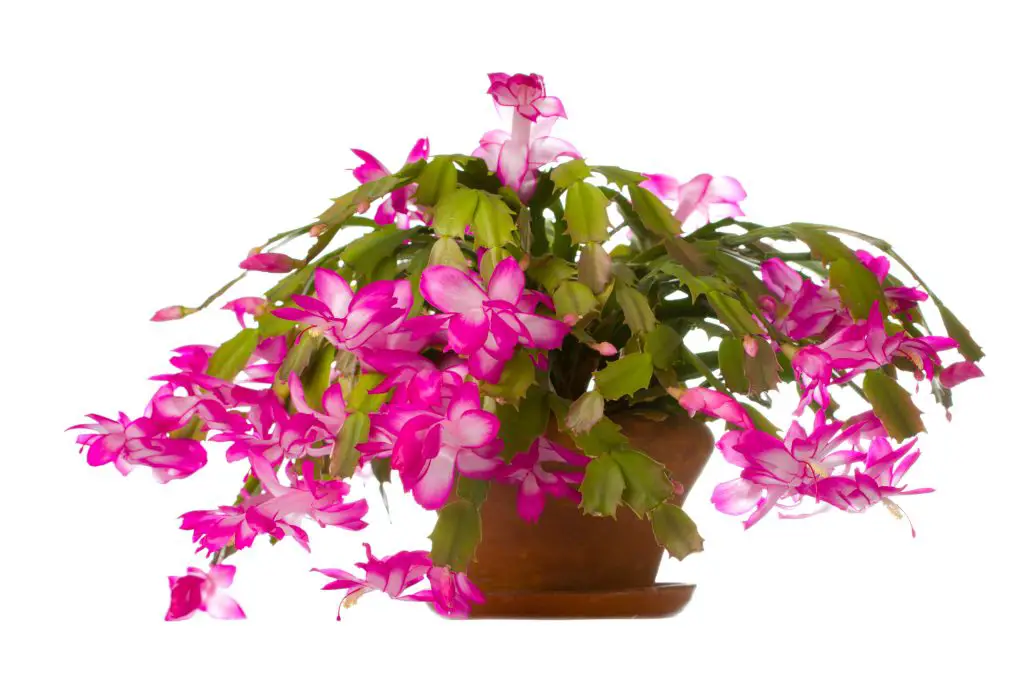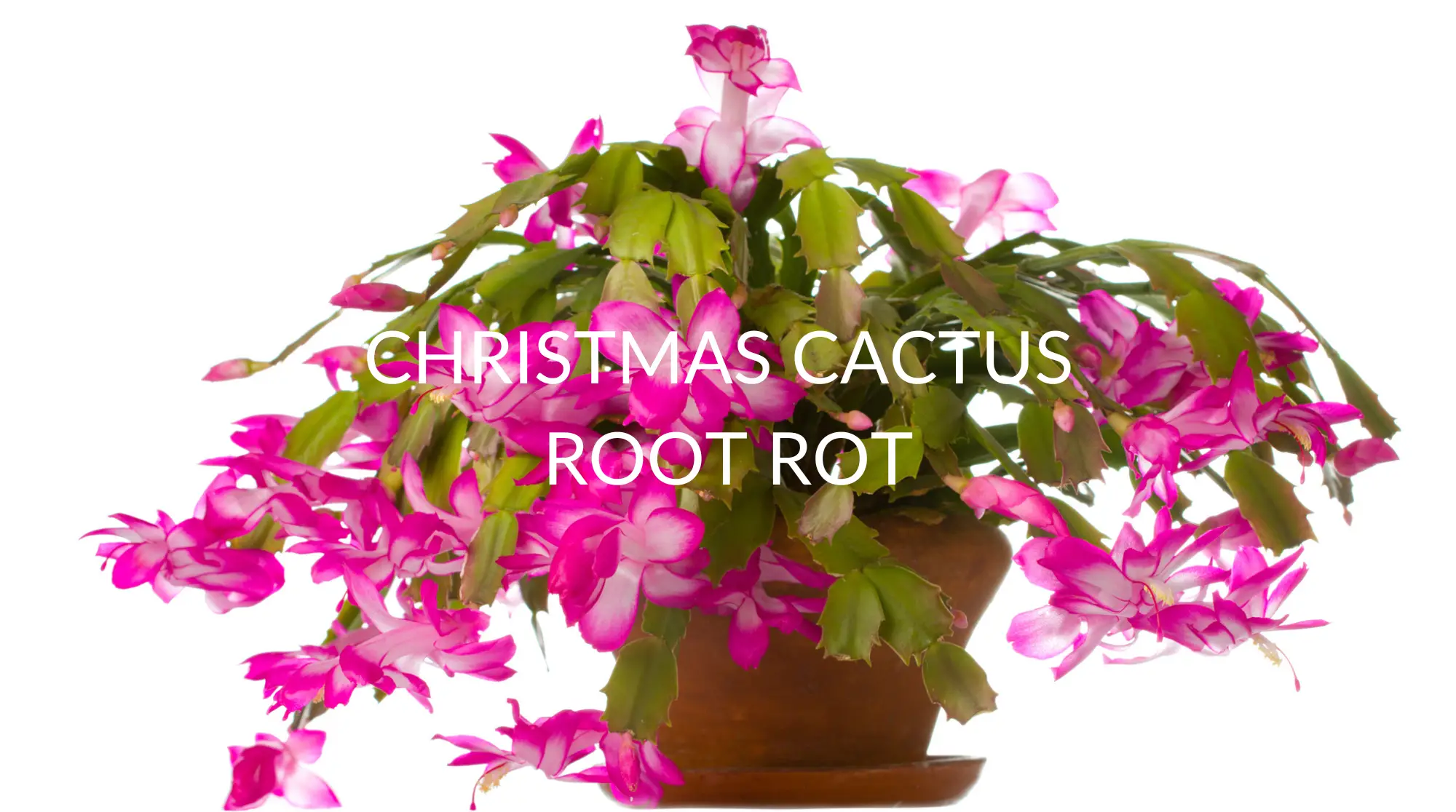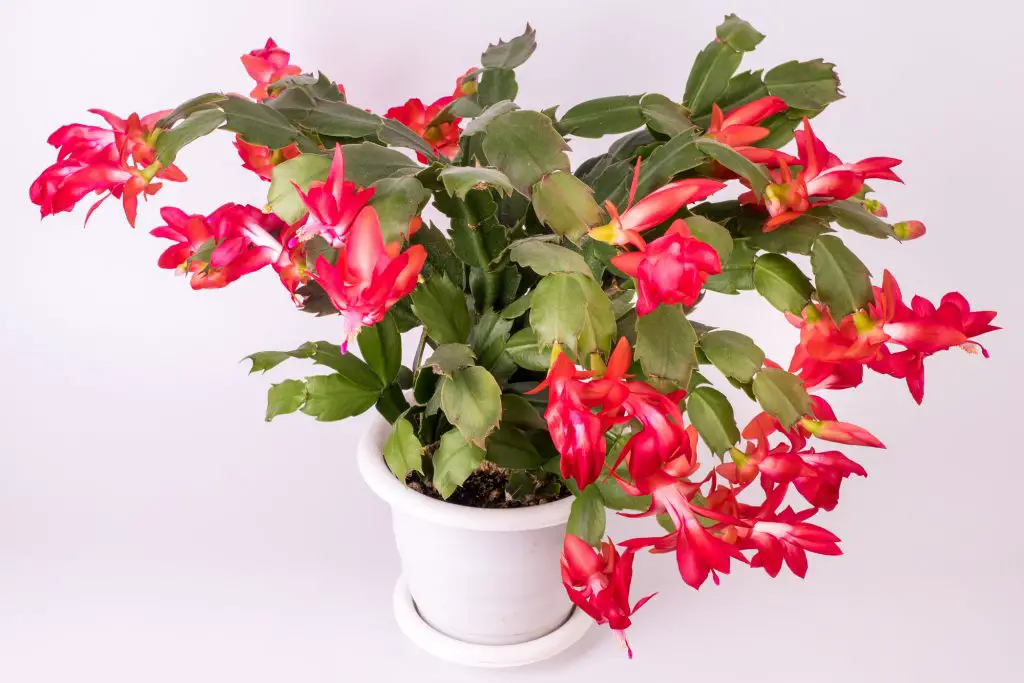A Christmas Cactus is a great addition to any plant lover’s home and can produce some beautiful flowers. If you’re looking to add this delicate and beautiful plant to your home, then you might be wondering how to care for your Christmas Cactus and how to prevent or treat root rot.
Root rot is caused by overwatering allowing conditions for fungi and bacteria to grow. Treating root rot involves pruning away damaged roots, cutting back the leaves and branches, and repotting your Christmas Cactus.
The Christmas Cactus is a hardy plant that can usually thrive in unfavorable conditions, but root rot, in particular, is a real pain to deal with for any plant owner. The rest of this article will help you assess root rot and provide proper care for your Christmas Cactus.
What Is a Christmas Cactus?
A Christmas Cactus comes in several varieties—Thanksgiving Cactus, Christmas Cactus, and Easter Cactus—each of which has its own aesthetic appeal, but all of them can bloom during the winter, making them a great option for, well, Christmas.
The Christmas Cactus is a succulent, making it a good choice for beginner plant owners, although it’s certainly not the easiest succulent out there. It also helps that the cactus doesn’t have prickly hair-like spikes like other species.
Flattened leaves in segmented bulges fan out, and at the end of fall or early in winter, flowers bloom on the ends of each stem. You can plant your cactus in a hanging basket to encourage the growth and ‘draping’ of the stems for a fuller winter bloom. In our opinion, the plant looks gorgeous in a hanging basket, too.
Traditionally, Christmas Cactus hail from the Brazilian rainforest, but they can be started any time of the year indoors until the summer when they should be planted outside.
If your plant is properly established and healthy, it should grow quickly under ideal conditions and bloom during late fall or early winter.
Caring for a Christmas Cactus
The Christmas Cactus, in particular, has some unique challenges compared to other cacti. This holiday cactus lives in the rainforest and requires more water than its desert-dwelling cousins. You’ll also need to give consideration to light, soil, temperature, humidity, and fertilizer.
Water
As with most other plants, most owners make the mistake of watering too much, flooding the roots, and interfering with the absorption of nutrients. It also creates ideal conditions for the growth of root rot (but more on that later).
When you water your cactus, do so thoroughly, allowing excess water to flow through the drainage holes in your pot. Only water when the soil is almost dry to the touch.
With most other succulents, you’ll want to wait until the soil is entirely dry to prevent a buildup of moisture, but the Christmas Cactus needs more water than most other cacti, so more frequent waterings are advisable.
If the leaves start to shrivel, then it’s likely that you’re underwatering your cactus. 2-3 times a week is perfect during the summer, although you should generally operate by the finger test to see how dry the soil is.
Light
As with any plant, light is important to the growth and long-term health of the plant. Christmas Cacti prefer partial shade or filtered light, although they can manage with full sun during the winter months.
It’s not advisable to leave them in full sun during the other seasons, however, since the plant can yellow and begin to wilt.

Soil
Adaptable and hardy, the Christmas Cactus is perfectly happy with most kinds of soil, including cactus mix, perlite, loamy, sandy, or just regular ole potting soil. The soil environment should be slightly acidic, leaning from 5.5-6.2, and peat moss can help create a more suitable acidic environment.
Temperature and Humidity
Ample humidity is needed for best-growing conditions. You may have to artificially boost the humidity for the plant if your home is too dry. Misting or using a water-filled pebble tray under the pot can help the plant maintain the right amount of humidity for long-term health.
Temperature, on the other hand, isn’t so easy to sort out for your new picky plant. As it blooms during late fall to early winter, temperatures during the day should be at 70-80 degrees, with nighttime temperatures of 55-65 degrees.
Not the most practical for an indoor environment. Furthermore, the Christmas Cactus needs 13 hours of darkness minimum to form flowering buds.
You can increase your chance of success by limiting exposure to sudden temperature changes like windows, oft-opened doors, and heating vents. Christmas Cacti exposed to these conditions regularly won’t bloom and will drop off its flowers or buds when in unfavorable conditions.
Getting Christmas Cacti to bloom can be quite a challenge, but if you notice your buds falling off, then it’s a surefire way of knowing that your cactus isn’t happy and that you’ll have to try, try again in the next blooming season.
Fertilizer
Monthly fertilizer treatments are good for Christmas Cactus during spring and summer. Dilute a half-strength water-soluble balanced fertilizer and stop immediately once you see flower buds forming. Once your cactus has bloomed, resume fertilizer treatments as normal. This regimen helps provide the cactus with the best growth opportunities.
Other Important Care Tips
Right after your Christmas Cactus blooms, it can be pruned by twisting the stems or using a sterilized knife or scissors. This encourages the plant to branch out and grow more stems. This is safe to do after blooming up until later spring without fear of damaging the plant.
You can plant these stem segments in a cool, dry place for 2-3 days and subsequently plant the cuttings in a 4-inch pot. Water well to encourage rooting and strive for a humid environment. You can achieve this using the pebble underlayer or by tenting the cuttings with a clear plastic bag secured by a rubber band.
Adult Christmas Cacti don’t need to be replanted often—every 3-4 years will do the trick. You could alternatively just use visual cues to tell you when the plant needs repotting. Ragged stems or roots stretching out from the drainage holes are cues that your Christmas Cactus needs repotting.
Unlike other plants, Christmas Cacti don’t like to be repotted when there’s new growth. Wait until the end of spring when you start to notice the flowers wilting.
What Is Christmas Cactus Root Rot?
Root rot can affect the Christmas Cactus just like any other plant. When certain conditions are prevalent in a plant, bacteria and fungi can spread more easily, leading to root rot, a disease that rots away the roots of a plant.
What Causes Root Rot in Christmas Cactus?
Root rot in a Christmas Cactus can be caused by several factors that allow bacteria and fungi to take root (pardon the pun) in just about any plant. The disease is deadly, stripping the plant of its roots and inevitably causing it to die from a lack of nutrients. The common causes of root rot include overwatering and incompatible soil.
Overwatering
It happens to the best of us. Succulents simply don’t need a lot of water and should really only be watered when the soil is mostly dry to the touch. Christmas Cacti crave water more than other succulents, so they are less susceptible to root rot caused by an abundance of moisture.
This moisture creates an ideal environment around the root system for harmful bacteria and fungi to grow, inevitably leading to root rot. In addition to watering less frequently, make sure you clean up any excess water coming out of the drainage holes to reduce the risk of root rot setting in.
In truth, overwatering is extremely easy to do, so it’s better to err on the side of caution and water your plants when you see the leaves starting to shrivel rather than preemptively watering and drowning the roots.
Excess water can also interfere with the plant’s ability to absorb nutrients properly, weakening the plant and allowing for the onset of root rot.
Incompatible Soil
Christmas Cacti can manage well with most types of soil, but one that’s balanced and well-draining is ideal. A soil that doesn’t drain well holds water, which—you guessed it—allows root rot to set in. A mix of 75% substrate, 25% perlite, and low fertilizer optimized for a 5.5 pH is perfect for Christmas Cactus, both to encourage growth and stave off root rot.
Other Factors
Pests can also contribute to root rot, although in a roundabout way. If pests damage the root system, your Christmas Cactus will have a harder time filtering nutrients, once again leading to an overwatering problem that prompts the onset of root rot.
Mealybugs are common pests that look like little white specs of dust. Diluting isopropyl and dabbing your plant carefully can get rid of a mealybug problem, although you’ll probably need to do this on all your houseplants to kill off an infestation.
Signs of Christmas Cactus Root Rot
The best way to check for root rot is to lift the plant out of its pot carefully and examine the roots. Roots covered in a black or brown slime are infected with root rot. You can start to notice this externally if your leaves look wrinkled or wilted.
Yes, this can be due to other causes, but in the case of root rot, poor nutrient absorption is causing the plant to suffer.
Can a Christmas Cactus Recover from Root Rot?
A Christmas Cactus can recover from root rot, but only in the early stages. Oftentimes, if the root rot is established in the plant, there is no saving it, and you’ll have to propagate it and start afresh.
How to Save Your Christmas Cactus from Root Rot
To save your Christmas Cactus from root rot, you’ll want to see the extent of the damage. Follow these steps to assess and fix the damages:
- Lift your Christmas Cactus out to examine the roots
- If your plant looks mostly healthy, you can cut away any infected roots as thoroughly as possible
- Prune back the leaves and branches so that your Christmas Cactus has less plant matter to support
- Repot with fresh suitable soil
Assuming the rot isn’t too bad, then simply cutting away the roots can solve your problem. If the extent of the damage is severe, you’ll need to propagate a healthy cutting, preferably consisting of 2-3 joined segments. Leave it to dry out overnight and root it into a fresh container with a quarter of the new plant below surface level.
Water sparingly, and 2-3 weeks later, you should notice growth at the tips of the leaves.
FAQs
Do Uninfected Stems Attached to Damaged Roots Need to Be Cut Off?
It’s prudent to cut back stems attached to damaged roots. Generally, it’s not because the stem itself is infected; rather, it’s to reduce the amount of plant matter the cactus has to support since a portion of the root system has been excised. A good rule of thumb is that if you cut the roots back by half, cut the stem back by half, too.
What Does Stem Rot Look Like on a Christmas Cactus?
Stem rot can have similar causes as root rot and usually manifests as a black or brown discoloration that makes the stem appear wilted or withered. The onset of stem rot usually indicates that the infection has transferred from the root and that to save your Christmas Cactus, propagation is necessary.
Conclusion
Prevention is the key to fighting off any form of root rot. It’s extremely difficult to catch root rot early, and by the time you notice pressing symptoms, it may already be too late.
Make sure not to overwater your Christmas Cactus, only watering when the soil is almost dry to the touch. Potting in a terracotta or clay pot can also help reduce the amount of excess water held in the pot and allow it to egress more easily.








